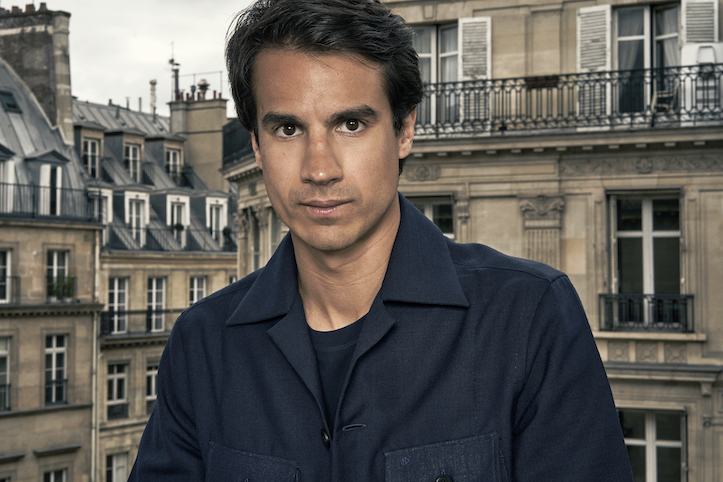 After news of the Notre Dame’s fire in 2019, everyone has been left to wonder if it can even be restored at all to its previous state. Luckily, Andrew Tallon scanned the entire cathedral in 2015, creating a perfect digital copy. With 3D technology to digitize art and landmarks, we now have a way to preserve our global heritage and historical landmarks.
After news of the Notre Dame’s fire in 2019, everyone has been left to wonder if it can even be restored at all to its previous state. Luckily, Andrew Tallon scanned the entire cathedral in 2015, creating a perfect digital copy. With 3D technology to digitize art and landmarks, we now have a way to preserve our global heritage and historical landmarks.
Facts and Stats
Currently, about 10% of the world’s historic sites are digitized.
3D scanning can be done by anyone with a phone thanks to Google partner’s Scan the World: scans can be “simply created through a series of overlapping photographs taken on a digital camera or smartphone.”
Late art historian and professor Andrew Tallon scanned the Notre-Dame, collection over a billion points of data from 50 different mapping locations.
Understanding 3D Imaging vs 3D Laser-Scanning
Both are technologies that digitize art and monuments, but each has a different process and optimal use.
Both 3D imaging and 3D laser-scanning are beneficial for large historic monuments, but 3D imaging can capture much smaller features like those on the human body.
Scanning technology is significantly more expensive than 3D imaging, but it is useful to capture intricacies of a space like a cave or the inside of a pyramid that a photograph cannot capture as well.
3D scanning uses infra-red light projection, or a laser-scanner, pointed at the surface of an object, then converts that data into a digital output termed a ‘point cloud’.
3D imaging uses a process known as photogrammetry, which involves extracting 3D data from two-dimensional inputs by using computer software to overlap images. On average, 95 photos are required for this process.
Benefits of 3D digitization technology
3D images or scans can be used as a reference for restoration and rebuilding purposes.
Scans allow for the comparison of a building to its previous state, allowing researchers to understand how the building was used over time.
Quotes by John Dodelande about 3D digitization technology’s benefits
“The laser scans can also act as a kind of time portal, a way to compare the changes that have accrued within a building’s structure over the course of its history.”
“With the continued use of 3D technology, we will come to understand our past and preserve our future in ways we cannot yet imagine.”
3D imaging can serve as a mechanism for museums and cultural institutions to preserve a digital copy of larger landmarks and monuments.”
“The result of digitization is an affordable and reliable approach to art that facilitates communication between diverse cultures and peoples. Digital copies of cultural artifacts benefit the global community by throwing open the doors to a realm of art that is otherwise only 2 to 4 percent accessible by the masses.”
Examples of Digitized Monuments
Iconem digitized the Giza necropolis in 2018 using photogrammetry.
Dual Energy CT scanning digitised the British Museum’s collection of Egyptian mummies.
Laser technology has digitized the Chavin de Huantar in Peru and Mesa Verde in the United States.
Quotes from John Dodelande about scannable technology
Why is China scanning their art?
“China invested massively in European scanning companies and U.S. scanning companies because they are trying to digitize all of their cultural assets Company conglomerates specialize in this in China or invest abroad. Asia’s written history goes back a much longer time than the Western world, so it has more things to archive than we do.”
“China is supporting internal tourists for their internal culture. We don’t have this in Europe. We don’t have a museum only full of French history. But in China, there are a lot of great cultural sites where they only talk about the Chinese history. So they do it for themselves.”
“I think today it’s focused locally, but at some point they will spread it because the worldwide reserves have to include Asian and Chinese history.”
Architecture quotes
“So, today, the best candidate for the macro is named the Scanner and it was created by an Englishman named Adam Lowe. He’s part of the leading company for facsimile and archiving of microfilm. He did the Noces de Cana from the Louvre. In the 19th century, Napoleon invaded Italy and we stole the Cana from them. The Italian government wanted Noces de Cana back, but the French said no. So they sent this team with Adam to create a facsimile of the painting. And the Italian government took this facsimile and put it in its original place in San Giorgio in Venice.”
“You may not be able to get back the original, but you can get back a facsimile with this technology. So this technology was created to put back into place history’s purpose.”
“There’s a leading company called Iconem led by a French architect... Europe is still the leader in this field because while it is not profitable, it is so important. And Europe knows how important it is to develop such things.” [scanners].
www.percepto-digital.com